Business
US Markets Tumble as Trump Confirms Tariffs on Canada, Mexico

Contents
Introduction
The recent announcement by President Trump regarding the imposition of tariffs on imports from Canada and Mexico has sent shockwaves through the US markets. Investors have responded with noticeable caution, leading to a significant decline in stock prices across various sectors. The confirmation of these tariffs has raised concerns over potential retaliation from neighboring countries, as well as its implications for trade relations and the broader economic landscape. The targeted goods primarily include a range of metals essential for manufacturing and construction.
The tariffs, aimed at protecting domestic industries, have ignited debates among economists and policymakers regarding their potential impact on job creation and consumer prices. As uncertainty looms, market participants are grappling with the possible consequences of these trade barriers. The announcement not only affects bilateral trade agreements but also reverberates through global markets, as international trade remains intricately interconnected. Furthermore, the imposition of tariffs may strain relationships with key trading partners, raising the stakes for negotiations and diplomatic engagements.
In the wake of this development, it is crucial to examine how these tariffs may influence investor sentiment and business confidence. With financial markets already sensitive to geopolitical tensions, the introduction of tariffs exacerbates existing vulnerabilities. Companies that rely heavily on cross-border supply chains may face increased costs, potentially leading to ripple effects that could dampen growth projections and market stability. The tariffs, aimed at protecting domestic industries, have ignited debates among economists and policymakers regarding their potential impact on job creation and consumer prices.
Furthermore, the imposition of tariffs may strain relationships with key trading partners, raising the stakes for negotiations and diplomatic engagements. The broader economic implications of such protectionist measures cannot be underestimated, as they could impact GDP growth, consumer spending, and job creation across various industries. In this context, the stock market’s response features prominently in assessing the potential long-term impacts of this policy shift.
The Announcement
On a pivotal day in trade relations, President Donald Trump confirmed the implementation of tariffs on goods imported from Canada and Mexico, igniting concerns across financial markets. This announcement, made via a televised address, detailed specific tariff rates of 25% on steel imports and 10% on aluminum, which are set to take effect in the coming weeks. The administration emphasized that these tariffs were necessitated by the belief that the domestic steel and aluminum industries were facing unfair competition, undermining national security. The targeted goods primarily include a range of metals essential for manufacturing and construction.
In his speech, Trump framed the tariffs as a necessary measure to protect American jobs and revive industries that had suffered due to foreign competition. The administration asserted that these tariffs would help to level the playing field, benefiting U.S. workers in a global economy that it deemed unfair to American producers. Furthermore, the President stated that negotiations would continue with both Canada and Mexico, aiming to reach a comprehensive trade agreement that would ensure equitable practices among trade partners.
This tariff announcement has significant implications not only for bilateral trade relations but also for markets reliant on these materials. Sectors such as construction, automotive, and manufacturing could experience cost increases as companies face higher prices for imported steel and aluminum. Consequently, businesses are bracing for the potential ripple effects, which could ultimately be passed on to consumers. As the administration moved forward with implementing these tariffs, market analysts and investors remained attentive to potential retaliatory measures from Canada and Mexico, fearing a full-scale trade war might ensue. The ramifications of this policy are expected to be closely monitored in the weeks leading up to the enactment of the tariffs.
Market Reaction
The announcement of new tariffs on Canada and Mexico by President Trump sent shockwaves through U.S. financial markets, leading to a swift and significant downturn across major indices. The Dow Jones Industrial Average experienced an immediate decline, shedding over 500 points at the market’s open, while the S&P 500 and the NASDAQ Composite faced similar downtrends, dropping by approximately 2.5% and 3% respectively. This pronounced market reaction reflects investor anxiety over potential trade wars and the implications for economic growth.
Within the stock market, certain sectors were particularly hard-hit due to the tariff announcement. For instance, shares of major automotive manufacturers, which rely heavily on cross-border trade, saw significant declines. Ford and General Motors experienced drops of around 3% and 4%, respectively, as investors reacted to the potential increase in costs of raw materials and the threat of retaliatory tariffs. Additionally, large retailers with substantial international supply chains, like Walmart and Target, also faced pressure, reflecting the market’s concerns over growing expenses associated with imported goods.
Trading volume during this period was notably high, indicating robust market activity as investors rushed to adjust their positions in response to the tariff news. Analysts pointed to a surge in activity across various sectors, with specific increases noted in options trading, as many sought to hedge against further volatility. Sentiment among market participants leaned toward caution, with many expressing concerns that the tariffs could not only disrupt existing trade relationships but also slow down U.S. manufacturing growth. Overall, the immediate market reaction to the tariff confirmation underscores the fragility of investor confidence amid important geopolitical developments.
Impact on Trade Relations
The announcement of tariffs by former President Donald Trump has significant implications for trade relations between the United States, Canada, and Mexico. Historically, the United States has maintained a complex relationship with its North American neighbors, particularly through various trade agreements that aimed to foster cooperation and economic integration. One of the most notable agreements is the United States-Mexico-Canada Agreement (USMCA), which replaced the North American Free Trade Agreement (NAFTA) in 2020. The intention behind such agreements has been to reduce barriers to trade and encourage a balanced economic partnership.
The imposition of tariffs, however, disrupts this delicate balance. Tariffs increase the cost of imports, effectively placing a tax burden on consumers and businesses that rely on goods from Canada and Mexico. This action raises significant concerns regarding the long-term sustainability of tariffs and their potential to incite a trade war. Canadian and Mexican officials have expressed their discontent, emphasizing that tariffs threaten to erode years of progress made through collaborative efforts in trade. This response underscores the apprehension regarding retaliatory measures that could follow, potentially exacerbating an already tense trade situation.
In anticipation of possible retaliatory actions, both Canada and Mexico may consider implementing their own tariffs on U.S. goods, which could lead to a cycle of tit-for-tat tariff increases. Such developments could not only harm the economies of the countries involved but also disrupt supply chains and limit market access for businesses. The uncertainty surrounding these tariffs poses challenges for exporters and importers alike, as they navigate an evolving landscape of trade policy. Consequently, the broader implications of these tariffs extend beyond immediate financial considerations, influencing diplomatic relations and economic stability in the region.
Economic Implications
The announcement of tariffs by the Trump administration on imports from Canada and Mexico has created substantial ripple effects within the economic landscape of the United States. Tariffs, which are essentially taxes levied on imported goods, have the potential to alter the economic equilibrium by affecting various stakeholders, including consumers, businesses, and the overarching market conditions. One of the immediate implications of such tariff measures is the likelihood of increased inflation. As businesses face higher costs for imported materials, they may pass these costs onto consumers, leading to an uptick in prices. This inflationary pressure can reduce purchasing power, thereby affecting consumer spending and overall economic health.
Additionally, the tariffs may lead to a realignment of business costs across several sectors. Manufacturers reliant on imported materials may see a drastic rise in operational expenses, constraining profit margins and forcing some firms to reconsider their pricing strategies. This could further translate into slower economic growth as companies cut back on investments or employment to manage increased costs. Sectors such as automotive and technology, which often depend on complex supply chains spanning across international borders, may experience significant disruptions, potentially leading to job losses and production delays.
The ramifications of these tariffs extend beyond immediate price changes, with long-term impacts on trade relationships and competitiveness in the global market. The United States has historically benefitted from its trade agreements with both Canada and Mexico, and imposing tariffs may damage these affiliations. As businesses navigate the challenges posed by new trade barriers, there is a risk of retaliatory measures from the affected countries, further complicating economic interactions and threatening the viability of numerous industries.
Expert Opinions
The recent announcement by former President Donald Trump regarding the imposition of tariffs on Canada and Mexico has garnered a spectrum of responses from economic experts and trade analysts. Understanding the implications of these tariffs requires consideration of both short-term and long-term effects on the U.S. economy and labor market.
Many economists have voiced concerns that the new tariffs could lead to increased consumer prices, as goods imported from Canada and Mexico are likely to become more expensive. This sentimental viewpoint suggests that American consumers may ultimately bear the burden of these tariffs through higher retail prices. A potential consequence could be a decrease in consumer spending, negatively impacting economic growth.
On the other hand, some analysts argue that the tariffs could provide a cushion for domestic industries by limiting foreign competition. They claim that selectively imposing tariffs can incentivize American companies to boost production and potentially create jobs. Those in favor of the tariffs assert that revitalizing certain industries could lead to a more robust labor market in specific sectors.
However, trade experts caution that retaliatory measures from Canada and Mexico could escalate into a trade war that ultimately harms American businesses that rely on imports. The interdependence of supply chains means that many U.S. companies could see their operations disrupted, prompting fears of job losses rather than job creation.
Financial commentators emphasize the need for a measured approach. The effects of tariffs are often complex and can ripple through various sectors, affecting everything from agriculture to automotive manufacturing. They advocate for a comprehensive review of trade policies and recommend engaging in negotiations rather than relying solely on tariffs as a tool for economic policy.
Reactions from Business Leaders
The recent announcement by President Trump regarding tariffs on imports from Canada and Mexico has elicited a variety of responses from influential business leaders and industry organizations. Many executives voiced their concerns about the potential repercussions these tariffs may have on their operations, supply chains, and overall business models. The imposition of these trade barriers is perceived to complicate relations with crucial trading partners, raising fears of increased costs and disrupted access to essential materials.
For example, the automotive sector, which heavily relies on cross-border trade with both Canada and Mexico, expressed significant apprehension. Executives from major automotive companies indicated that the tariffs could lead to an escalation in production costs, translating into higher prices for consumers. Statements from leaders at companies such as Ford and General Motors highlighted that the uncertainty caused by these tariffs might force them to reevaluate their investment strategies and sourcing options.
In the agriculture sector, farmers have echoed similar sentiments, illustrating the precarious balance that tariffs upset in what has been a complex supply chain. The Farmers Union remarked that such trade policies could significantly hinder their ability to export goods, ultimately reducing their market competitiveness. Additionally, some agricultural leaders emphasized the essential nature of trade agreements and collaborative relationships with neighboring countries for maintaining stable prices and ensuring access to diverse markets.
Organizations like the U.S. Chamber of Commerce and the National Association of Manufacturers also responded diplomatically, stressing that tariffs threaten to disrupt economic growth and job creation. While they recognize the government’s attempt to leverage trade negotiations, many leaders advocate for a more integrated approach rather than implementing unilateral tariffs that could foster retaliation and further trade disputes.
As the market adjusts to these developments, business leaders are poised to explore strategic adjustments to navigate the evolving landscape, seeking both short-term and long-term solutions to mitigate the impacts of the newly established trade barriers.
Public Response
The announcement of tariffs on Canada and Mexico by President Trump has garnered a significant public response, marked by widespread discourse across various platforms, especially social media. Many Americans took to Twitter, Facebook, and other channels to express their sentiments regarding this controversial move, which many perceive as detrimental to trade relations with neighboring countries. Public opinion appears divided, with some individuals voicing their support for the tariffs as a means to protect American jobs and industries. They argue that imposing tariffs can level the playing field against what they consider unfair trade practices by other nations.
Conversely, numerous critics have emerged, cautioning that such measures could escalate tensions and potentially lead to retaliatory tariffs, which might hurt American consumers and businesses alike. Some experts predict that these tariffs could raise the prices of essential goods and disrupt supply chains, ultimately affecting everyday Americans. In response, protests have taken place in several cities, where demonstrators have called for free trade and warning against the implications of the trade war rhetoric. This civil unrest highlights a growing concern within various segments of the population regarding the potential economic repercussions of the tariffs.
Also read : Banco BPM Meets Investors in Paris and Milan: An Update on the Italian Banking Sector
Summary and Looking Ahead
In light of the recent announcement by former President Donald Trump regarding the imposition of tariffs on Canadian and Mexican goods, the U.S. markets have witnessed significant turbulence. This decision, attributed primarily to the ongoing concerns over trade imbalances and national security issues, has raised questions about the future dynamics of U.S.-Canada-Mexico trade relations. The immediate reaction from investors has been largely negative, spurring declines in stock indices and fostering an atmosphere of uncertainty concerning economic stability.
Looking ahead, several potential scenarios may unfold in response to this tariff policy. One possibility is the initiation of negotiations aimed at reaching a compromise that would prevent further escalation of the trade conflict. Diplomatic discussions might focus on addressing the underlying concerns raised by the tariffs while seeking mutually beneficial solutions for both U.S. and its neighbors. The historical context of trade relations suggests that negotiation often serves as an effective tool for navigating complex disputes.
Conversely, there exists the potential for increased escalation, should retaliatory measures be enacted by Canada and Mexico in response to these tariffs. Such a scenario could lead to a trade war, characterized by a tit-for-tat approach, further harming not only the bilateral trade relationships but also impacting sectors reliant on smooth trade flows. This escalation could deter investment and trigger a broader market downturn. The historical context of trade relations suggests that negotiation often serves as an effective tool for navigating complex disputes.
Ultimately, the resolution of this tariff conflict hinges on the willingness of all parties involved to engage in constructive dialogue. As markets react to these profound changes, only time will reveal the long-term implications for U.S.-Canada-Mexico trade relations and the wider stock market. It is essential for stakeholders to stay informed, as developments in this area will likely continue to influence economic outlook and investment strategies moving forward.
Breaking News
India Russian oil stop announcement by Trump sparks diplomatic shock, conflicting reactions, and trade tensions —
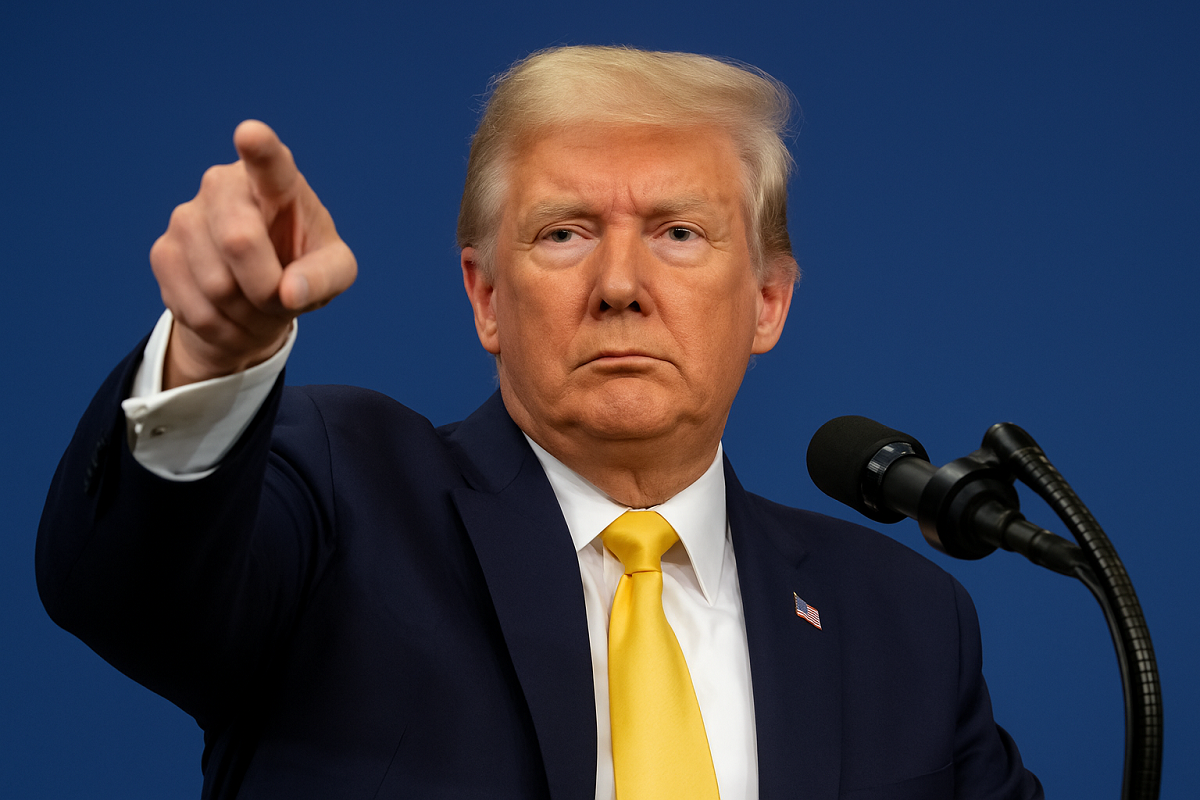
Contents
US, Oct.16,2025:India Russian oil stop became a dramatic flashpoint when U.S. President Donald Trump publicly claimed that Indian Prime Minister Narendra Modi personally assured him that India would cease buying Russian oil.
Trump made this revelation at a White House event, asserting that Modi is committed to cutting off Russia’s energy revenues-
He described the transition as “a process, but that process will be over with soon.”
If true, this would mark a seismic shift in India’s energy diplomacy. But as of now, the Indian government has not endorsed or confirmed this claim publicly.
Trump’s statements-praise, love, and clarifications
Praise turns personal
As he made the bold India Russian oil stop declaration, Trump didn’t just focus on policy — he wove in personal praise. He called PM Modi “a great man” and said Modi “loves Trump.”
Trump remarked, “I love Modi,” but quickly added he didn’t want that to be misinterpreted. He clarified that he had no intention of harming Modi’s political image.
Such remarks added an odd, almost romantic tone to a highly charged diplomatic statement — and raised eyebrows in New Delhi.
“It’s a little bit of a process”
Trump acknowledged that India couldn’t halt Russian oil imports overnight. He described the shift as gradual but assured that it would be completed “soon.”
He further said that even though the transition isn’t immediate, it’s underway: “There will be no oil. He’s not buying oil.”
This nuanced caveat — “process” — suggests Trump understands the complexity of energy supply chains, but still wants to frame the move as inevitable.
Reactions from New Delhi and political opposition
India’s official stance- cautious and refusal to confirm
New Delhi has responded cautiously. Foreign Ministry communiqués emphasize that India will safeguard the interests of its citizens — ensuring energy security and affordability.
The Indian government has neither denied nor affirmed Trump’s claim. Instead, officials underscore that India’s decisions will follow national interest, not external pressure.
Opposition voices surge
In domestic politics, the claim sparked fierce reactions. Congress leader Rahul Gandhi accused PM Modi of compromising national dignity by “allowing Trump to decide India’s energy policies.”
He launched a five-point critique, saying Modi was “frightened” of Trump and silent on critical issues.
These debates deepen the domestic pressure on the government to clearly state its position.
Market and economic impact of the claim
Rupee rally and central bank intervention
The Indian rupee saw an immediate response. It strengthened by about 0.8 %, reaching 88.0750 per U.S. dollar — its best showing in months.
This rally was partly driven by market optimism that a India Russian oil stop commitment could ease trade tensions with the U.S.
The Reserve Bank of India also intervened heavily, selling dollars to curb volatility.
Oil markets and pricing pressures
Global oil markets responded too. Brent crude futures rose about 0.9 %, as traders priced in potential supply shifts.
If India reduces Russian oil imports, demand may shift to other suppliers, possibly pushing prices higher or disrupting logistics.
Trade tensions and tariff context
This claim comes in the wake of earlier U.S. tariffs targeting India’s Russian oil imports. The Trump administration had slapped up to 50 % tariffs on Indian goods partially as a response to India’s continued purchases of Russian crude.
Some analysts see this India Russian oil stop statement as an attempt at diplomatic recalibration.
Geopolitical stakes- U.S., Russia, India
U.S. pressure on Moscow
Trump’s aim is clear: to reduce Russia’s energy revenue and push Moscow toward a negotiated settlement in the Ukraine war.
By pressuring India and trying to bring China on board, Trump hopes to tighten the noose on Russian oil exports.
India’s strategic balancing act
India has relied on Russian oil imports for stability, affordability, and diversification of energy routes.
Yet India also prizes strategic autonomy — foreign pressure to change energy policy challenges that principle.
Russia’s response and future ties
If India actually curtailed Russian oil purchases, Russia would lose a major client. That could escalate tensions or lead Moscow to offer deeper discounts or alternate partnerships.
At the same time, Russia may retaliate in diplomatic or defense sectors.
Questions and contradictions
Did Modi really promise
The largest question is whether the promise was ever made. India has not validated Trump’s claim.
Modi’s silence on the matter has fueled speculation and skepticism.
Can India manage an abrupt shift
India’s energy system is complex. Supply chains, contracts, refining capacities, and global oil markets all need adjustment. A sudden stop in Russian oil is extremely challenging.
Even Trump concedes: the halt is not immediate.
Hidden motivations
Critics argue the announcement could serve multiple political goals-
- Domestic benefit: bolster Trump’s image as a dealmaker
- Diplomatic positioning: signal alignment to U.S.
- Pressure tactic: push India toward concessions
We must ask: is this a signal or a realistic policy commitment?
is India Russian oil stop realistic
The phrase India Russian oil stop now looms large in geopolitical discourse. But whether it becomes reality is uncertain.
India faces domestic pressures — energy security, cost, supply chain disruptions — that make a full stop hard.
Diplomatically, confirming such a commitment could strain India’s ties with Russia and upset its balancing foreign policy.
Breaking News
India-UK Strategic Partnership 2025 takes a major leap as PM Modi meets British PM Keir Starmer in Mumbai-
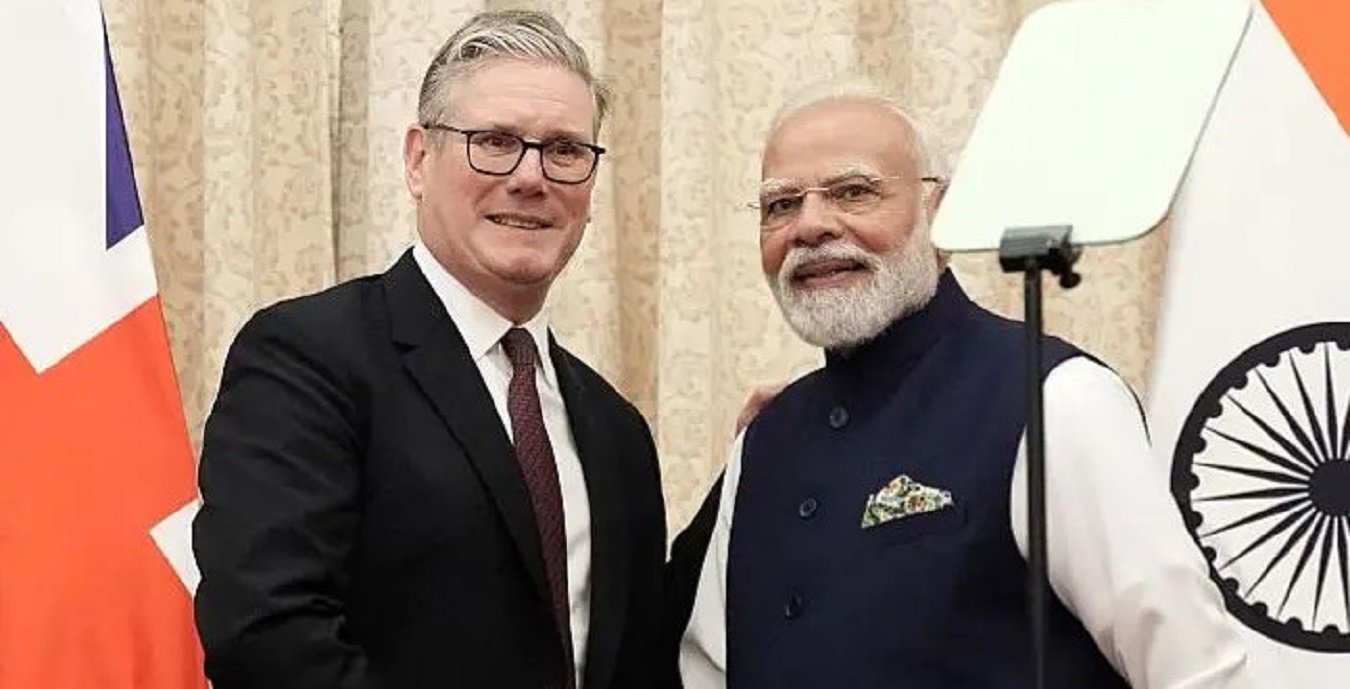
Contents
Mumbai,Oct.09,2025:India-UK Strategic Partnership 2025 began a new era of cooperation as Indian Prime Minister Narendra Modi met British Prime Minister Keir Starmer in Mumbai on Thursday. This high-profile meeting comes just months after Modi’s successful visit to the UK in July, where the two nations signed a series of landmark trade and economic agreements-
In a joint statement, both leaders reaffirmed their commitment to deepen ties across trade, technology, education, and culture — calling the partnership a pillar of “global stability and shared prosperity.”
Key Highlights of PM Modi and Keir Starmer’s Meeting
- The meeting took place in Mumbai, marking Starmer’s first official visit to India as the UK Prime Minister.
- PM Modi emphasized that the India-UK Strategic Partnership 2025 will continue to strengthen economic cooperation and reduce import costs.
- A major trade delegation — the largest ever from the UK to India — accompanied Starmer.
- New agreements were discussed in sectors including film, education, renewable energy, and innovation.
PM Modi expressed optimism, stating-
“The growing partnership between India and the UK is a beacon of hope in today’s uncertain world. Together, we can shape a stable and prosperous global order.”
Building Economic Bridges
At the heart of the India-UK Strategic Partnership 2025 lies the new Economic and Trade Agreement, signed earlier this year. The deal is expected to:
- Reduce import costs for key goods and services.
- Create thousands of jobs in technology, finance, and renewable energy sectors.
- Boost bilateral trade by over 25% in the next three years.
- Facilitate startups and innovation through joint research programs.
According to Reuters, the trade pact could add $14 billion annually to the combined economies of India and the UK. This agreement also aims to simplify visa norms, allowing professionals and students to move more easily between the two countries.
Cultural Collaboration and Bollywood in Britain
A fascinating development under the India-UK Strategic Partnership 2025 is the announcement of a new agreement to promote Bollywood filmmaking in the UK. PM Keir Starmer highlighted that the UK will become a “global hub” for Indian film productions.
“British studios and locations are ready to welcome Indian filmmakers. This will not only promote cultural exchange but also strengthen our creative economies,” Starmer said.
This collaboration aims to blend Indian storytelling with British cinematic expertise, creating cross-cultural masterpieces. British tourism boards are already exploring “Bollywood Trails” to attract Indian tourists to iconic UK film locations.
British Universities in India
Another major pillar of the India-UK Strategic Partnership 2025 is education. PM Starmer announced that British universities will establish campuses in India, making the UK one of the largest international education providers in the country.
This initiative is designed to-
- Expand access to world-class higher education for Indian students.
- Foster research partnerships between Indian and British institutions.
- Encourage student and faculty exchange programs.
Leading universities like Oxford, Cambridge, and Imperial College London have reportedly expressed interest in setting up joint-degree campuses in cities such as Bengaluru, Mumbai, and Delhi.
Global Stability and Strategic Unity
In his address, PM Modi stressed that in an era of “global uncertainty,” the India-UK Strategic Partnership 2025 serves as a vital anchor for stability.
Both leaders emphasized cooperation in-
- Counter-terrorism and cybersecurity.
- Climate action and green technology.
- Defence innovation and maritime security.
They also discussed the ongoing conflicts in the Middle East and Ukraine, expressing their shared goal of promoting peace through diplomacy.
“India and the UK stand united in safeguarding democratic values, economic openness, and global stability,” said PM Modi.
Expert Opinions and Global Reactions
Experts have hailed the India-UK Strategic Partnership 2025 as a “transformative blueprint” for global cooperation.
- Dr. Ramesh Thakur, a foreign policy analyst, noted that “this partnership combines India’s growing economic influence with Britain’s technological and educational strengths.”
- The Confederation of British Industry (CBI) welcomed the trade initiatives, predicting that UK exports to India could double by 2028.
- Indian Chambers of Commerce called the meeting “a turning point” in redefining global south–west relations.
Global markets responded positively, with Indian and British stock indices showing a slight uptick following the leaders’ joint statement.
The Road Ahead for India and the UK
The India-UK Strategic Partnership 2025 marks a decisive moment in global diplomacy. With deeper trade, educational exchange, and cultural cooperation, the two democracies are laying the foundation for a more resilient global order.
As PM Modi aptly concluded-
“Our partnership is not limited by geography or economics — it is bound by shared values, trust, and the promise of a better world.”
With sustained political will and people-to-people connection, India and the UK are poised to become a model of modern partnership — one that shapes the 21st-century global balance.
Breaking News
Arattai Messaging App’s Stunning Rise- Can India’s Chat Revolution Challenge WhatsApp in 2025-

Contents
New Delhi, Oct.09,2025:The Arattai Messaging App, developed by Indian tech giant Zoho Corporation, has suddenly become one of the most talked-about apps in the country. Within just seven days, the app reportedly surpassed 7 million downloads, igniting conversations about whether India’s homegrown innovation can finally rival WhatsApp, the global leader in messaging-
The word “Arattai” translates to “chat” or “banter” in Tamil, a fitting name for an app that aims to connect people across India through seamless digital communication.
But the question remains: Can Arattai Messaging App truly challenge WhatsApp’s dominance in India, where the Meta-owned platform has over 500 million active users?
The Sudden Rise of Arattai
According to market intelligence firm Sensor Tower, Arattai had fewer than 10,000 downloads in August. But by late September, it skyrocketed to millions — a surge fueled by growing calls for “Made in India” products and government-backed digital self-reliance campaigns like Make in India and Digital India.
The turning point came when Union Minister Dharmendra Pradhan endorsed the app on X (formerly Twitter), urging citizens to “embrace indigenous innovation.” Soon after, several ministers, industry leaders, and influencers joined the movement, catapulting Arattai into the national spotlight.
Zoho’s CEO, Sridhar Vembu, told Media News that the spike in downloads “showed how excited Indian users are about supporting a truly native product that meets their everyday communication needs.”
“Within just three days, our daily sign-ups rose from 3,000 to over 350,000,” said Vembu. “Active users have grown 100 times, and this growth hasn’t slowed.”
However, he remained cautious, noting that Arattai’s success depends on sustained user engagement — not just a wave of initial enthusiasm.
What Makes Arattai Different
The Arattai Messaging App mirrors many of WhatsApp’s core features — including instant messaging, voice and video calls, and business tools — but with a twist of Indian innovation.
Key features include–
- Lightweight performance on low-end phones
- Smooth functioning on slow internet connections
- Simple and familiar interface
- Focus on privacy and data control
Like WhatsApp, Arattai aims to serve both individual and business users, providing secure communication channels for companies, startups, and communities.
Many early users on social media praised its clean design, ease of use, and patriotic appeal, calling it “the Indian answer to WhatsApp.”
Government Support Boosts the Indian App Movement
The Indian government’s increasing push for self-reliance has played a huge role in Arattai’s success. Prime Minister Narendra Modi’s campaigns like “Make in India” and “Atmanirbhar Bharat” (Self-Reliant India) have encouraged citizens to choose domestic digital alternatives over foreign apps.
With rising trade tensions and digital sovereignty debates, many Indians are eager to adopt homegrown technology. Arattai has become a symbol of digital nationalism, aligning perfectly with the government’s messaging.
Zoho’s Vision Behind Arattai
Founded in 1996, Zoho Corporation is one of India’s most respected tech companies, known globally for its business software ecosystem.
According to Sridhar Vembu, Arattai was originally launched quietly in 2021, but the company never aggressively promoted it — until now.
“We wanted Arattai to evolve naturally,” Vembu said. “What we’re seeing now is the outcome of years of effort to build a scalable, secure communication platform rooted in Indian values.”
Zoho insists that Arattai’s growth is not just about competition, but about offering choice in a digital market dominated by multinational corporations.
Can Arattai Compete With WhatsApp’s Scale
While Arattai’s rise is impressive, experts say competing with WhatsApp will be an uphill battle.
WhatsApp’s integration into daily life — from family chats to business transactions — makes it deeply entrenched in India’s digital ecosystem.
“It’s extremely difficult for any app to displace WhatsApp in India. Businesses, government agencies, and millions of users are tied into its infrastructure.”
Still, he acknowledges Arattai’s potential-
“If it continues to improve and stay true to its privacy promises, Arattai could carve out a loyal niche among users seeking Indian alternatives.”
Can Nationalism Drive User Retention
Experts argue that national pride alone may not guarantee long-term success. While initial downloads are driven by emotion, sustained engagement requires consistent innovation.
“Nationalism may spark curiosity, but retention needs performance, reliability, and trust,” said digital strategist Ankit Gera.
Arattai must not only attract new users but also keep them engaged with continuous updates, bug fixes, and business integrations — areas where Meta’s WhatsApp currently excels.
Data Privacy Concerns Around Arattai
Despite its rise, data privacy has become a growing concern. While Arattai provides end-to-end encryption for voice and video calls, it does not yet encrypt text messages, raising red flags among cybersecurity experts.
Shashidhar K.J., Managing Editor at Medianama, noted-
“The Indian government’s desire for traceable messaging makes it challenging for local apps to offer full encryption. Arattai’s current setup may allow easier government access to user data.”
In response, Zoho CEO Vembu assured that end-to-end encryption for text messages is in progress and will roll out soon.
“We want users to have complete control over their data,” he said. “Once full encryption is implemented, even we won’t be able to access user conversations.”
For comparison, WhatsApp already offers full encryption for both messages and calls, though it shares metadata with authorities under legal conditions.
India’s Legal Landscape and Its Impact on Local Apps
India’s evolving digital laws pose another challenge for Arattai Messaging App. Under current regulations, platforms must share user data with authorities in certain cases.
Global giants like Meta (WhatsApp) and X (formerly Twitter) have the legal and financial muscle to challenge such demands in court — as seen in the 2021 legal battle where WhatsApp sued the Indian government over new IT rules that threatened privacy protections.
Local startups, however, lack similar resources. Analysts warn that Arattai, being a domestic company, may face pressure to comply with data requests from the government more readily.
Tech policy expert Rahul Matthan stated-
“Unless Zoho clarifies its stance on government access and user data, many users will hesitate to fully migrate to Arattai.”
How Arattai Fits Into the Tech Ecosystem
India’s rise as a digital innovation hub is reshaping global tech trends. The Arattai Messaging App represents not just competition for WhatsApp, but also the broader push for digital sovereignty in emerging economies.
Other countries, too, are developing national alternatives to global apps — from China’s WeChat to Russia’s Telegram. Arattai’s success could inspire similar initiatives across Asia and Africa.
Challenges and Opportunities
To sustain its growth, Arattai must address several key challenges-
- Ensure complete end-to-end encryption to build trust.
- Compete on features — such as payments, business APIs, and group management.
- Retain users with continuous innovation and strong customer support.
- Navigate government pressure while upholding user privacy.
If Zoho succeeds, Arattai could become a global benchmark for ethical, Indian-built communication platforms.
Can Arattai Sustain Its Meteoric Growth
The Arattai Messaging App stands at a fascinating crossroads. Its rapid rise showcases India’s capacity for world-class digital innovation, fueled by national pride and technological ambition.
Breaking News
Trump’s 100% Tariff on Branded Drugs in 2025 Huge Impact on India and Global Pharma-

Contents
US, Sep.26,2025:Trump 100% Tariff on Branded Drugs has sparked a storm across the pharmaceutical world. On Thursday, former U.S. President Donald Trump announced a sweeping new trade measure: a 100% tariff on all branded and patented pharmaceutical imports, effective October 1, 2025–
This move, shared on his platform Truth Social, will drastically reshape global pharmaceutical trade. For India—one of the largest exporters of medicines to the United States—the decision comes as a fresh blow after existing 50% tariffs already dented export margins.
Alongside medicines, Trump also slapped 25% tariffs on heavy-duty trucks, 50% tariffs on kitchen and bathroom cabinets, and 30% tariffs on upholstered furniture.
Details of the New 100% Tariff Policy
Trump declared that beginning October 2025.
- 100% tariff will apply to all branded and patented pharmaceutical products not made in the U.S.
- 50% tariff will apply to all imported kitchen cabinets, bathroom vanities, and related furniture.
- 25% tariff will target heavy-duty trucks.
- 30% tariff will hit upholstered furniture.
He justified these tariffs as necessary to protect American manufacturers from “unfair foreign competition” and to safeguard national security interests.
Why Trump is Targeting Branded Drugs
At the core of Trump’s 100% Tariff on Branded Drugs lies his long-standing trade policy—”America First.” Trump has repeatedly accused countries like Ireland of offering low corporate tax rates to lure U.S. pharmaceutical giants such as Pfizer, Merck, and Johnson & Johnson.
By imposing heavy tariffs, Trump aims to force drug makers to shift production back to the U.S. instead of outsourcing to Ireland, India, or other low-cost countries.
Impact on Indian Pharmaceutical Exports
India exports around $12.7 billion worth of medicines annually to the U.S., according to the Global Trade Research Initiative (GTRI). While most are generic drugs, India also supplies branded formulations through leading firms like.
- Dr. Reddy’s Laboratories
- Lupin Limited
- Sun Pharma
These companies already operate at thin profit margins. With tariffs doubling to 100%, many may find it unsustainable to continue branded drug exports.
North America contributes nearly one-third of Indian pharma companies’ profits, meaning any disruption could shake their financial stability.
Indian Generic vs Branded Drug Market in the US
- Generics dominate: Nearly 90% of U.S. prescriptions are filled with generic drugs, and half of them originate from India.
- Branded drugs matter less for India, but tariffs still hurt because they raise overall compliance costs.
- According to IQVIA, Indian generics saved the U.S. $219 billion in 2022 alone.
Experts warn that if tariffs extend to generics in the future, U.S. healthcare costs could skyrocket and shortages could worsen.
The Ireland Factor in Branded Drugs Tariffs
The biggest hidden target of the Trump 100% Tariff on Branded Drugs may be Ireland.
- Ireland hosts factories of over a dozen top pharma companies, including Merck, AbbVie, and Eli Lilly.
- Products like Keytruda (Merck’s cancer drug) and Botox (AbbVie) are manufactured there for U.S. consumers.
- Trump has accused Ireland of running a “tax haven scam” at America’s expense.
This makes Ireland’s pharmaceutical exports a likely primary casualty of the tariff war.
Consequences for US Healthcare Costs
If tariffs are enforced strictly.
- Drug costs will rise in the U.S. due to reduced competition.
- Patients may face shortages, especially for specialized treatments like cancer and obesity drugs.
- Insurance companies could increase premiums.
- Hospitals may cut back on treatments that rely on imported branded drugs.
Ironically, while Trump’s policy is meant to protect American manufacturers, it may hurt American patients the most.
Expert Reactions and Global Trade Concerns
- GTRI experts warn Indian pharma exporters may be “priced out” of the U.S. market.
- Reuters analysts note Trump’s tariffs risk violating WTO rules, sparking global trade disputes.
- U.S. Commerce Secretary Howard Lutnick has defended the move, calling Ireland’s policies a “scandal.”
Global reactions remain divided—some view this as protectionist overreach, while others see it as a wake-up call for diversifying supply chains.
Future of India–US Pharma Trade Relations
For India, the challenge is twofold.
- Safeguard generics – India must push through trade negotiations to keep generics exempt from tariff hikes.
- Diversify exports – Indian firms may need to explore markets in Europe, Africa, and Latin America to reduce dependency on the U.S.
Experts suggest that without a bilateral trade deal, Indian companies could lose competitiveness in the world’s largest pharma market.
A Global Ripple Effect
The Trump 100% Tariff on Branded Drugs is more than a trade policy—it’s a geopolitical signal. While it may protect U.S. truck and cabinet makers, the real storm is in pharmaceuticals.
For India, the short-term impact may be limited to branded drugs, but the long-term fear is clear: if generics are targeted, America’s healthcare system could face unprecedented costs and shortages.
Breaking News
US sanctions on Chabahar Port deal a major setback to India’s regional trade strategy. Here’s how it impacts India, Iran, and global geopolitics-
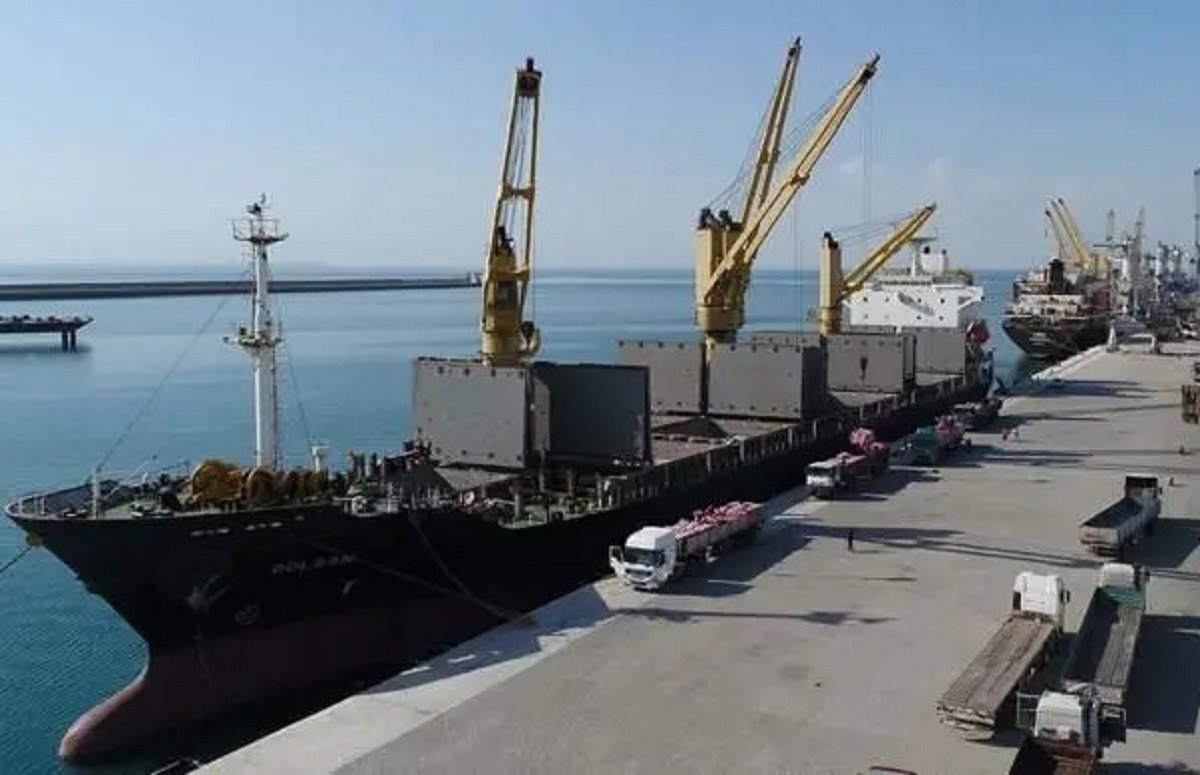
Contents
US,Sep.19,2025:According to US State Department deputy spokesperson Thomas Pigott, the exemption granted in 2018 under the Iran Freedom and Counter-Proliferation Act (IFCA) will end on September 29, 2025-
This exemption had allowed India to operate and invest in the Chabahar project without facing US secondary sanctions. The waiver was originally justified as being essential for Afghanistan’s reconstruction and trade, at a time when US forces were still present in the region.
Now, anyone involved in the operation, financing, or development of Chabahar Port will fall under American sanctions, creating serious legal and financial risks for India.
Why Chabahar Port Matters to India
The US sanctions on Chabahar Port are significant because the port is not just a trade hub but a pillar of India’s connectivity diplomacy.
- Chabahar lies on Iran’s southeastern coast in Sistan-Baluchestan province, providing India a gateway to Afghanistan and Central Asia without going through Pakistan.
- It is India’s first overseas port management project. In May 2024, India signed a 10-year contract to operate the Shahid Beheshti terminal.
- The project is linked to the International North–South Transport Corridor (INSTC), a 7,200-km multimodal network aimed at boosting trade between India, Iran, Russia, Central Asia, and Europe.
Timeline of India’s Engagement with Chabahar
- 2003: India first proposed to develop Chabahar Port to bypass Pakistan.
- 2016: PM Narendra Modi visited Iran, signing the landmark Chabahar agreement.
- 2018: US sanctions on Iran were tightened, but Chabahar was exempted.
- 2019: First shipments from Afghanistan reached India via Chabahar, bypassing Pakistan.
- 2023: India shipped 20,000 tonnes of wheat to Afghanistan through Chabahar.
- May 2024: India signed a 10-year operating contract, the first of its kind for India overseas.
- September 2025: The US officially revoked Chabahar’s waiver, placing India in a difficult position.
The Strategic Blow to India
The US sanctions on Chabahar Port directly undermine India’s multi-billion-dollar investment. Experts say it will:
- Delay India’s connectivity projects with Central Asia.
- Limit India’s ability to counter China’s Belt and Road Initiative (BRI), particularly at Pakistan’s Gwadar Port, located just 100 km from Chabahar.
- Weaken India’s geopolitical bargaining power with Iran and Afghanistan.
For New Delhi, this is not just an economic issue but a strategic loss.
China, Pakistan, and Gwadar
Chabahar has always been viewed as a strategic answer to Pakistan’s Gwadar Port, developed by China under the China-Pakistan Economic Corridor (CPEC).
Now, with sanctions looming, experts warn that China could step in to fill the vacuum left by India. Beijing is already Iran’s largest energy buyer and a key investor in infrastructure. If India is forced to scale down, Chabahar could tilt towards China, undermining India’s leverage.
Experts’ Views on the Sanctions
Prominent voices have sharply criticised Washington’s decision-
- Brahma Chellaney, strategic affairs expert, called the move a “punitive step against India”. He argued that China gains the most from such policies, while India pays the price.
- Michael Kugelman, South Asia expert at Wilson Center, said the revocation is “a strategic setback for India’s connectivity ambitions”.
- Zorawar Daulet Singh, geopolitical analyst, remarked: “This is an extraordinary situation where a so-called strategic partner is undermining India’s core interests while claiming to balance China.”
Impact on International North–South Transport Corridor (INSTC)
Impact on International North–South Transport Corridor (INSTC)
The INSTC project was designed to shorten cargo transport between India and Europe by thousands of kilometers. Chabahar was envisioned as the gateway port for this corridor.
With sanctions now clouding its future:
- INSTC’s viability is in question.
- Russia and Iran may seek to deepen ties with China, leaving India marginalized.
- India’s investments in road and rail links from Chabahar to Afghanistan risk stalling.
How US Strategy is Changing in the Region
Analysts note that the decision reflects Washington’s renewed “maximum pressure” policy against Iran, pushed by President Donald Trump in his second term.
While the US justifies the sanctions as a way to isolate Tehran, critics argue this undermines allies like India and pushes Iran closer to China and Russia.
For New Delhi, this presents a strategic dilemma—maintain ties with Washington or protect its hard-earned foothold in Iran.
India’s Options Going Forward
Faced with the US sanctions on Chabahar Port, India has limited but important choices:
- Diplomatic Negotiation – Seek a fresh waiver by lobbying Washington, highlighting Afghanistan and Central Asia’s dependence on Chabahar.
- Strengthen Ties with Iran – Double down on bilateral cooperation with Tehran to avoid losing influence to China.
- Diversify Connectivity – Accelerate work on the India-Middle East-Europe Corridor (IMEC), announced at the G20 Summit.
- Leverage Multilateral Platforms – Use BRICS, SCO, and UN forums to push back against unilateral sanctions.
The US sanctions on Chabahar Port are more than just an economic hurdle—they represent a significant strategic setback for India. For two decades, New Delhi has invested political capital and financial resources into making Chabahar a symbol of regional connectivity and independence from Pakistan’s chokehold.
Now, with Washington’s latest decision, India faces a narrowing path. Will New Delhi confront the US, or adapt its strategy by leaning more on Iran, Russia, and even China?
One thing is clear: the story of Chabahar is no longer about a port—it is about the future of India’s strategic autonomy in an increasingly polarized world.
Breaking News
India offered zero tariffs—an overdue move that may reshape global trade and backfire strategically
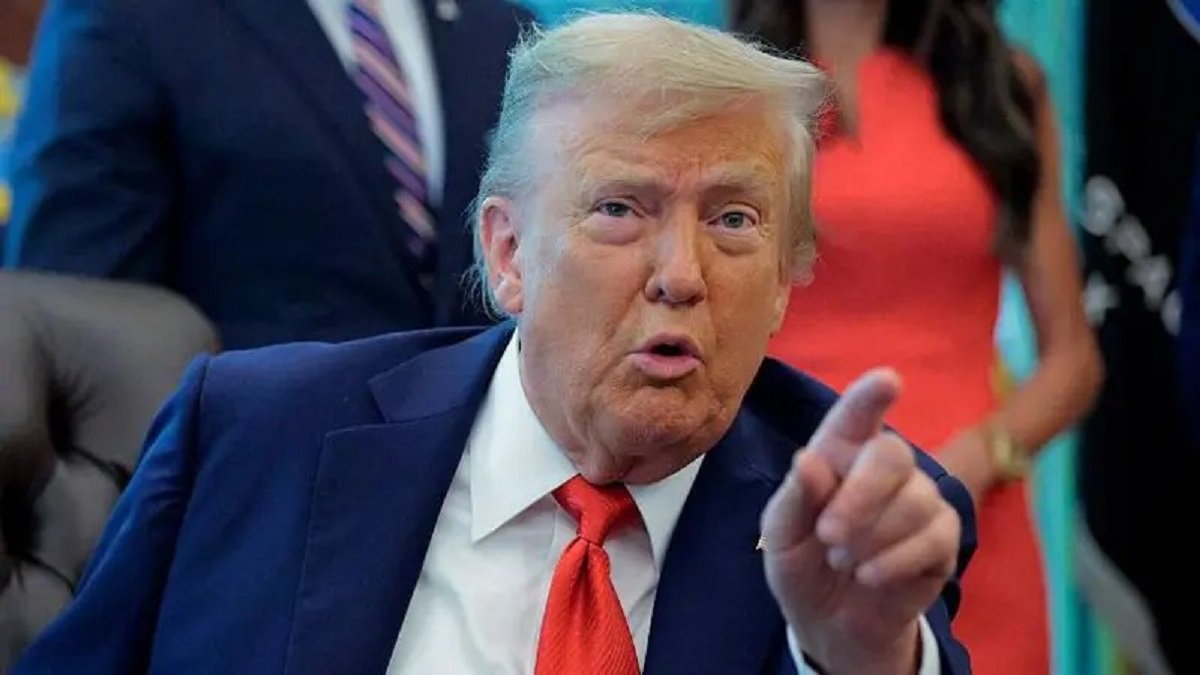
US, Sep.02,2025:India offered zero tariffs — that’s how former U.S. President Donald Trump framed the situation in a post on Truth Social on September 1, 2025. He called the U.S.–India trade relationship “totally one-sided,” stating that India “has now offered to cut their tariffs to nothing, but it’s getting late. They should have done so years ago.”
Why the Offer Came “Too Late”
Trump’s comments reflect growing tensions: earlier, the U.S. slapped India with exceptionally high tariffs—up to 50%—largely in retaliation for India importing discounted Russian oil. India viewed these tariffs as “unjustified and unreasonable,” pushing it to reaffirm strategic autonomy.
Navarro’s Sharp Criticism: “Maharaja of Tariffs”
White House trade adviser Peter Navarro didn’t hold back. Labeling India the “Maharaja of tariffs”, he accused it of erecting trade barriers that hurt U.S. businesses while acting in denial about its own policies. He added that India was “nothing but a laundromat for the Kremlin,” condemning its profitable refined oil trade with Russia. Navarro went further, calling it a “shame” to see Modi align with Putin and Xi at the SCO summit, urging India to side with Western democracies instead.
SCO Summit: Modi’s Balancing Act
At the Shanghai Cooperation Organisation summit in Tianjin, PM Modi stood alongside Chinese President Xi Jinping and Russian President Vladimir Putin in a highly visible display of solidarity. Although no major agreements emerged, the optics sent a clear signal of India’s intent to maintain a multipolar posture. Modi emphasized the “special and privileged” nature of India-Russia ties even as Indian-Russian trade surged to a record $68.7 billion in 2024-25. Analysts note that Trump’s punitive tariffs are nudging India closer to Russia and China.
Geopolitical Fallout & Strategic Autonomy
India’s refusal to cede to U.S. pressure isn’t just economic—it’s strategic. Analysts warn that such aggressive, transactional diplomacy by the U.S. could weaken long-term alliances. Meanwhile, ex-U.S. national security adviser Jake Sullivan called Trump’s policies toward India a “strategic loss” for Washington, arguing that sacrificing India undermines U.S. interests.
Shocking Consequences If This Deal Moves ForwardConsequence Why It Matters Erosion of U.S. Leverage A zero-tariff deal now would simply reward India after months of confrontation—weakening future negotiating power. Short-Term PR, Long-Term Rift A tariff cut may look like peace, but lingering distrust and strategic missteps could irreversibly fracture the relationship. Empowering Rival Alliances Seen through today’s lens, India stepping back into the U.S. orbit risks being interpreted as capitulation rather than cooperation. Undermining Quad Cohesion The Quad’s strength depends on perceived commitment—India’s oscillation raises doubts about its alignment. Domestic Blowback in India Nationalistic sentiment runs high. A perceived U.S. win could trigger pushback across India’s political spectrum.
Toward a Multipolar Trade Era
India offered zero tariffs—but the response was electric, charged with geopolitics, pride, and strategy. This moment underscores a broader global realignment: nations now prioritize autonomy, multipolar engagement, and pragmatic balancing.
For the U.S., the move should be a reminder: hard-ball tactics may win headlines—but lasting alliances require trust and shared vision. For India, it’s a moment to reaffirm that strategic autonomy isn’t isolation—it’s sovereignty.
Business
Brahmins profiteering’—Peter Navarro’s Bold, Controversial Jibe Hits India
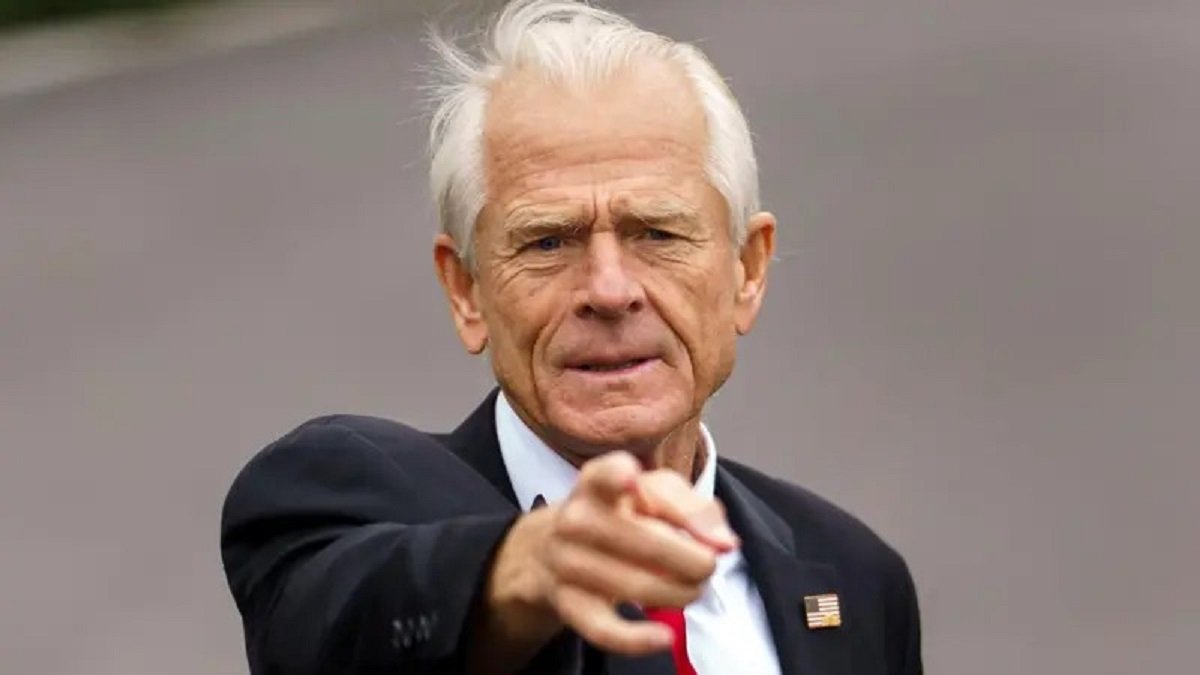
Contents
US,Sep.01,2025:The 2025 US–India trade crisis began in August when the Trump administration slapped a 25% “reciprocal” tariff on Indian goods. That quickly doubled to 50%, citing India’s continued purchase of Russian oil despite the Ukraine conflict.
This escalation came as India remained steadfast, arguing its oil imports were based on economic necessity and strategic autonomy—especially when Western nations continued to import Russian resources.
Navarro’s ‘Brahmins profiteering’ Charge Explained
Peter Navarro, doubling down on his earlier critiques, surged with inflammatory rhetoric:
- He labeled India “a laundromat for the Kremlin”, accusing Indian elites of refining cheap Russian crude and selling it at premium prices abroad.
- Most controversially, he said: “Brahmins are profiteering at the expense of the Indian people. We need that to stop.”.
- Navarro framed the 50% tariffs as a direct consequence of this profiteering, arguing they protect American taxpayers and workers while punishing elites.
US-India Trade Turmoil Tariffs & Retaliation
- The initial 25% tariff was imposed after stalled trade talks. The additional 25%—bringing it to 50%—was framed as retaliation against India’s oil dealings with Russia.
- Navarro insisted that if India stopped buying Russian oil, tariffs could be reduced “tomorrow”.
- Observers warn that these punitive tariffs could undercut strategic long-term cooperation, strain defense collaboration, and push India closer toward China or Russia.
India’s Defense Sovereignty or Strategy?
Indian officials have bristled at the narrative:
- They reaffirmed that oil imports are based on affordability and securing energy for 1.4 billion citizens, not geopolitics.
- India highlights its compliance with global norms and noted that the U.S. and EU continue to trade with Russia in other strategic sectors.
Domestic Reactions & International Alarm
- Indian political leaders denounced Navarro’s remarks. Shiv Sena’s Priyanka Chaturvedi called them “peak level of senile”, and others pointed out the deliberate misuse of caste rhetoric to foment division.
- Critics argue Navarro misunderstood the context. As one commentator on Reddit noted (verbatim):
“I’m a Brahmin and I’m not getting any profits from Russian oil… we’re progressing towards forgetting castes but this guy is pushing us backwards.”
- Internationally, analysts fear the deteriorating rhetoric could erode two decades of U.S.–India strategic alignment.
Broader Implications & Way Forward
- The crisis spotlights deeper questions: How can India balance energy needs with Western pressures? Can the U.S. impose punitive economic measures without damaging core alliances?
- Experts urge recalibration, emphasizing diplomacy over derision. The upcoming UN General Assembly may offer an opportunity for Trump and PM Modi to de-escalate tensions.
Brahmins profiteering—Navarro’s explosive phrase—has triggered more than headlines; it’s illuminated the fault lines between economic pragmatism and moral judgment, between strategic autonomy and geopolitical coercion. As both sides dig in, the horizon for resolution appears clouded. Yet, one truth remains: the cost of escalating rhetoric may be the very strategic partnership both nations need.
Business
India-withstands Trump tariffs five bold reasons
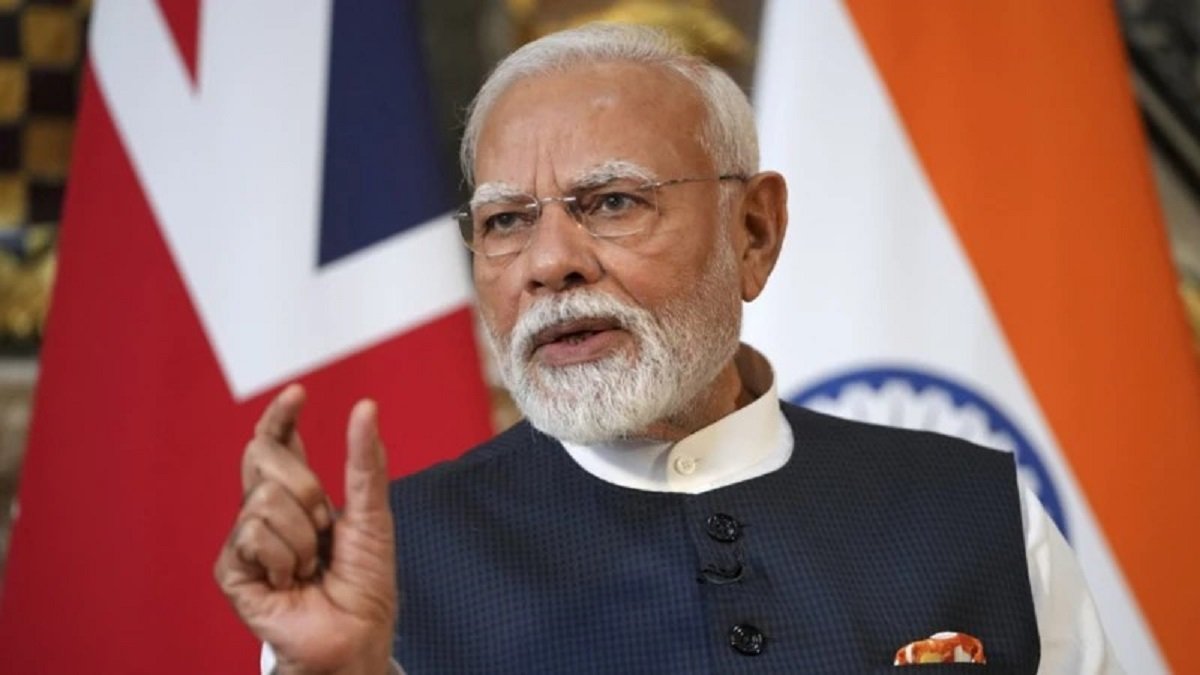
Contents
New Delhi,Aug.27,2025:Proactive steps from the government are bolstering the nation’s adaptability. Measures include lowering GST, enhancing export incentives, and pushing for new free-trade agreements—all aimed at boosting domestic demand and opening
Investor confidence remains firm
India withstands Trump tariffs emphatically, thanks to strong backing from rating agencies and domestic financial institutions. Fitch expects only a modest GDP impact, keeping growth at 6.5% for FY2025–26.
The Indian economy has earned a sovereign upgrade from S&P (from BBB– to BBB), signaling strong macroeconomic resilience and improving investor sentiment.
SBI research projects that while goods worth ~$45 billion could be impacted, trade negotiations and economic adaptability are expected to restore export confidence.
Expansive domestic market buffers shock
India’s vast and growing internal consumption base helps cushion external shocks. Exports comprise ~20% of GDP, meaning disruptions from a 50% U.S. tariff may have a muted overall impact.
Recent projections by GTRI foresee U.S.-bound exports dropping nearly 43%, but strong non-U.S. trade and rising services exports still maintain export momentum.
Government’s strategic countermeasures
Proactive steps from the government are bolstering the nation’s adaptability. Measures include lowering GST, enhancing export incentives, and pushing for new free-trade agreements—all aimed at boosting domestic demand and opening fresh markets.
PM Modi decisively stated he’s “ready to pay a very heavy price” to protect farmers, showing that national interests won’t be compromised under pressure.
India is also diversifying its trade portfolio, eyeing markets in Southeast Asia, Africa, Latin America, and the EU.
Controlled inflation and stable growth
Despite external turbulence, India’s monetary health remains intact.
Inflation is under control—ADB projects it to stay within RBI’s target (around 3.8% this year, rising to 4% by 2026). Retail inflation has even dropped to an eight-year low of 1.55% in July (inflation data from earlier text).
RBI preserved its 6.5% GDP growth forecast, even projecting Q1 growth at 6.9%, indicating steady momentum despite tariffs.
Infrastructure empowerment and policy initiatives
Under the Atmanirbhar Bharat vision, India is sharply increasing infrastructure investments and promoting domestic manufacturing.
Defence procurement from the U.S. has paused, but India is strengthening ties with BRICS partners and bolstering its global strategic posture.
Industrial leaders, like Sajjan Jindal, are driving self-reliance and local supply chain enhancement—key for sectors like EVs and green steel.
True to the headline: India withstands Trump tariffs not through defiance alone, but through strategic vision, economic diversity, policy agility, and internal strength. While the immediate fallout of a 50% tariff raises serious challenges, especially for export sectors, India’s broader foundation and intent to overhaul trade dynamics signal a robust path forward.
Business
Trump tariff peace deal is hailed as a game-changing intervention in the India–Pakistan conflict—discover how tariffs triggered a quick ceasefire and the heavy economic fallout
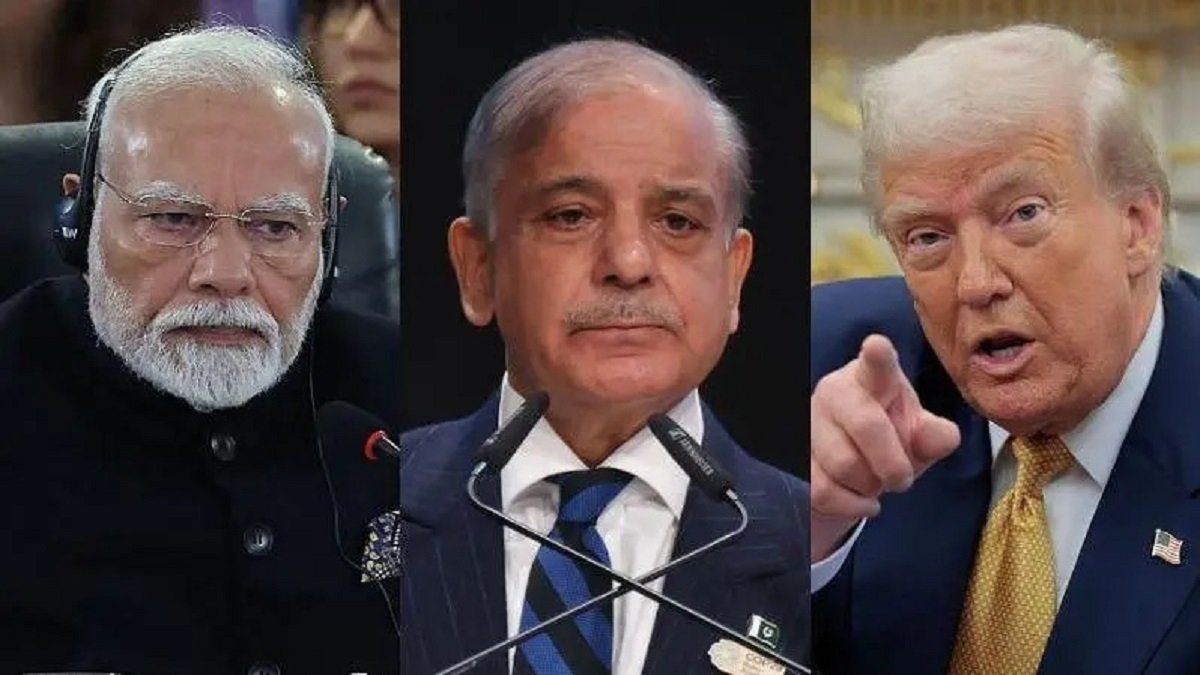
Contents
US, Aug.27,2025:Trump asserted that within five hours of his call, both India and Pakistan agreed to stand down. This claim, central to the narrative of the Trump tariff peace deal
The Bold Tariff Threat That Set Off Alarm Bells
Trump tariff peace deal kicked off when U.S. President Donald Trump, during a White House cabinet meeting, recounted a dramatic exchange with Prime Minister Modi. He claimed he warned that if fighting continued between India and Pakistan, the U.S. would impose tariffs “so high, your head’s going to spin”.
He framed this as a deliberate move to avert a nuclear conflict.
Swift Diplomacy and the Five-Hour Ceasefire
Trump asserted that within five hours of his call, both India and Pakistan agreed to stand down. This claim, central to the narrative of the Trump tariff peace deal, paints a picture of rapid, high-stakes diplomacy powered by economic threats rather than conventional statecraft.
Downed Jets: The Shocking Military Toll
To underscore the severity of the conflict, Trump repeated earlier claims that seven fighter jets (or possibly more) were downed, costing around $150 million in damage. These dramatic visuals fed into his narrative of urgent intervention through the Trump tariff peace deal.
India’s Firm Pushback and Diplomatic Reality
India has consistently denied any third-party involvement. Officials emphasized that the ceasefire was achieved via direct military-to-military dialogue between DGMO counterparts, not through outside mediation. This conflict between divergent narratives highlights the complexities of diplomacy versus political messaging.
Economic Fallout from the New 50 % Tariff
Simultaneously, the Trump tariff peace deal narrative coincided with the implementation of a sweeping 50 % tariff on Indian goods—the steepest levies imposed on any Asian country. Analysts warn of devastating consequences: sectors like textiles, gems, and seafood could face a 70 % drop in exports, potentially reducing GDP growth below 6 % and costing hundreds of thousands of jobs.
Strategic experts are also concerned this move signals a shift in U.S.–India relations toward confrontation, undermining trust and regional cooperation frameworks like the Quad.
The Trump tariff peace deal may sound dramatic and decisive—bolstered by vivid metaphors of spinning heads and catastrophic war. But beyond the headlines lies a tangled web of geopolitical storytelling, opaque motivations, and economic aggression. Whether this intervention was real or rhetorical, its market-shaking consequences are undeniable—and potentially long-lasting.
Business
GST-cut-cars-transform-festive-auto-sales

Contents
New Delhi, Aug.26,2025:The Federation of Automobile Dealers Associations (FADA), representing over 15,000 dealers, has raised urgent concerns. Dealers are carrying heavy inventory, financed through short-term bank and NBFC loans with typical 45–60 day tranches
GST Cut Cars Changing the Festive Auto Landscape
GST Cut Cars are the talk of the nation as India’s car buyers hit pause, anticipating a tax-driven price drop. This shift in behaviours is transforming the festive season’s typical auto frenzy into a waiting game. With forecasts hanging in the balance, timely policy action is crucial to unlock demand and vitality in the automotive sector.
Why Buyers Are Holding Off – The Waiting Game
Following Prime Minister Narendra Modi’s Independence Day announcement about GST reforms, consumers have largely delayed car purchases, expecting the GST Cut Cars to become cheaper by 8%–10%. This has triggered a sharp decline in sales and inquiries—many buyers are actively asking dealers about the exact tax cuts before deciding.
Vehicle showroom traffic is sluggish, and bookings are down—signaling a pause in consumer spending across cars, electronics, and appliances.
FADA Sounds the Alarm: Dealers Facing Inventory Stress
The Federation of Automobile Dealers Associations (FADA), representing over 15,000 dealers, has raised urgent concerns. Dealers are carrying heavy inventory, financed through short-term bank and NBFC loans with typical 45–60 day tranches. If GST Cut Cars don’t materialize soon, this could escalate costs and limit credit access for dealers.
FADA has appealed to the government to prepone the GST Council meeting—currently slated for September 3–4—and push for implementation before festive demand peaks.
Expected Tax Benefits: Calculated Savings for Buyers
The government is proposing to slash GST on small cars from 28% (plus cess) to 18%, aligning them with TVs, ACs, and appliances in the new lower slab—a large chunk of GST Cut Cars waiting to happen.
Estimates show major savings:
- Maruti Suzuki Wagon R: ₹60,000 reduction
- Baleno: ₹75,000
- Hyundai Creta: ₹55,000
- Mahindra XUV700: ₹1.15 lakh
This translates into EMI reductions of ₹600–₹2,000.
Potential Impact on EV Momentum
While GST Cut Cars are becoming more affordable, concerns loom over electric vehicles (EVs). Currently, EVs enjoy a 5% GST rate. With ICE models entering the 18% bracket, the cost differential may shrink—potentially dampening growth in the EV sector.
Stock Market’s Positive Response
Equity markets have rallied on the GST reform hopes. On August 18, auto stocks surged—Maruti Suzuki and Hyundai jumped 8–9%, while consumer goods names gained 4–7%.
Retailers and e-commerce players are hopeful—projecting festive sales growth of 20–30%, provided the GST Cut Cars are implemented soon.
Urgent Measures
- Advance GST Council timeline: Pushing the meeting earlier can help implement the GST Cut Cars window ahead of Diwali.
- Provide dealer relief: Extend channel financing tranches by 30–45 days to mitigate credit stress.
- Clarify cess utilization: Clear guidelines on accumulated cess credits post-reform will ensure smoother transitions.
Diwali’s Potential Comeback
GST Cut Cars carry the promise to reignite India’s festive auto boom—if implemented swiftly. Dealers, carmakers, and consumers are caught in limbo. But with timely reforms, Diwali could still spark a rebound with renewed purchase enthusiasm and economic vitality. Until then, the market stays on standby, waiting for the tax relief that could unlock the festive revival.

 Breaking News1 month ago
Breaking News1 month agoBalen Shah, Kathmandu’s independent mayor, from rapper to political leader. Explore his rise amidst Nepal’s youth-led revolution-

 Breaking News3 weeks ago
Breaking News3 weeks agoKanya Pujan 2025 Step-by-Step Rituals, Timings, and Powerful Benefits Explained-

 Breaking News4 weeks ago
Breaking News4 weeks agoShoaib Akhtar criticism, Pakistan vs India Asia Cup 2025-

 Breaking News3 weeks ago
Breaking News3 weeks agoJoganiya Mata history reveals her connection to the Hada dynasty, sacred legends, and evolving rituals at Chittorgarh’s revered temple-

 Breaking News4 weeks ago
Breaking News4 weeks agoCelebrate Chamunda Mata Ji Temple Navratri 2025 with nine days of spiritual devotion, cultural festivities-

 Breaking News1 month ago
Breaking News1 month agoPitru Paksha 2025-Seven Powerful Rituals and Sacred Places to Free Five Generations

 Breaking News3 weeks ago
Breaking News3 weeks agoAbhishek Sharma’s explosive 75 runs secured India’s spot in the Asia Cup 2025 Final- Will India face Pakistan or Bangladesh next-

 Breaking News1 month ago
Breaking News1 month agoMumbai Ganesh Visarjan Security is elevated with AI, drones, 10,000+ CCTVs, over 21,000 police personnel and




































